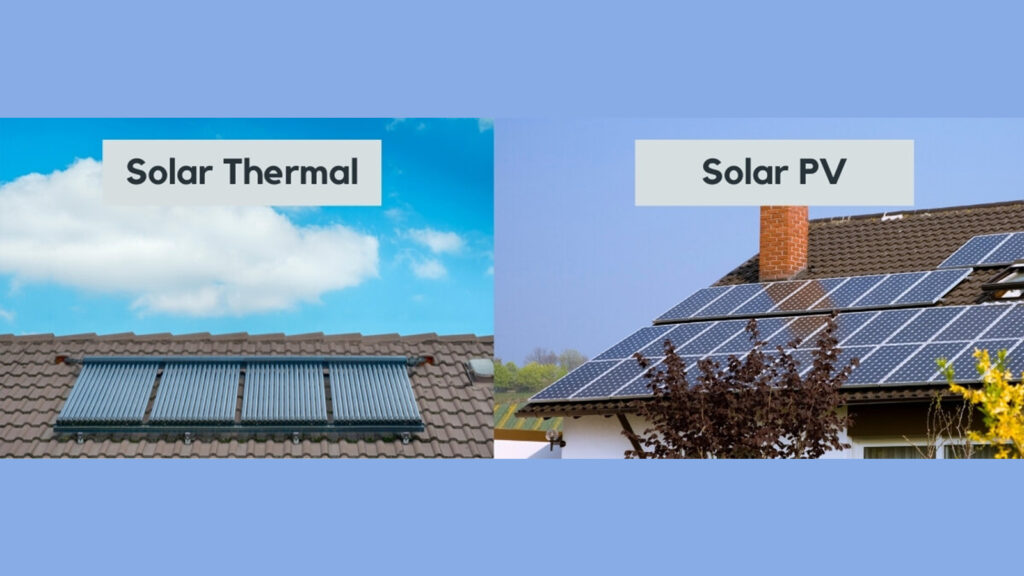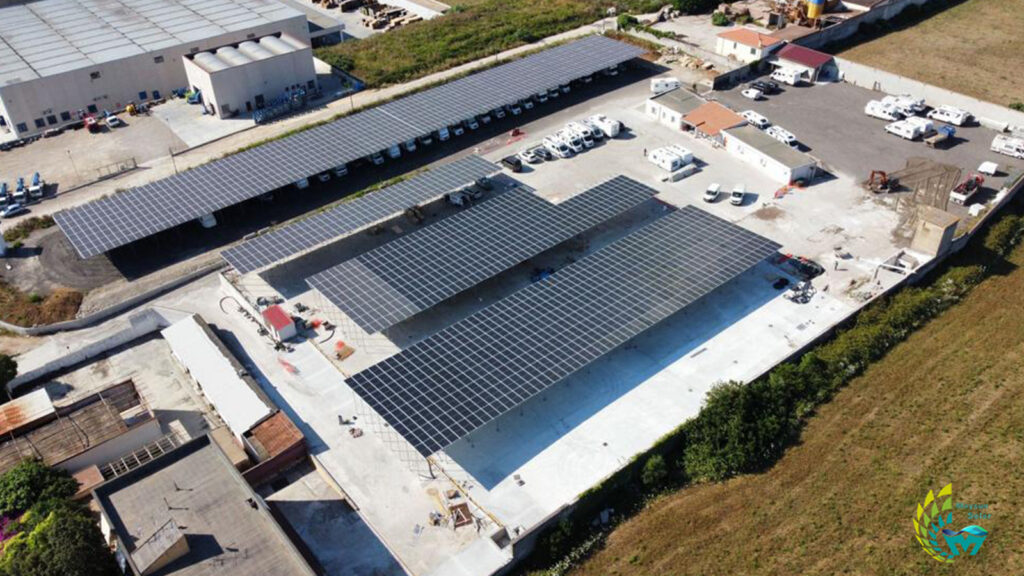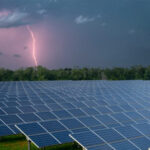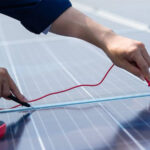What is the difference between a solar PV (photovoltaic) and a solar thermal system?
The core difference is how they work.
First, concentrated solar thermal systems generate electricity by converting solar energy into high-temperature heat. The way this particular technology works is that the sun’s energy is focused by multiple reflectors, and the focused energy is then used to power electrical generators and heat engines. The system’s plant is divided into two parts: one part collects solar energy and converts it into heat, and the other part converts heat into electricity. The alternating current is generated indirectly through concentrated solar thermal systems and is therefore easily spread across the grid.
In contrast, solar PV (photovoltaic) cells are completely different from concentrated solar thermal systems. The process of converting light directly into energy occurs when solar PV (photovoltaic) cells absorb light, causing electrons to become free. That’s how it works. The current generated by the flow of loose electrons is captured and transferred to the wire to create direct current. Once DC power is generated, it is usually converted to AC power using an inverter so that it can be distributed throughout the grid.
Solar thermal and solar PV (photovoltaic) can be used in a variety of ways; in most cases, thermal captures heat while panels generate electricity. Now that we understand some characteristics of solar thermal and panel systems, we can easily conclude that solar thermal is more efficient.
What Are the Application Scenarios for Solar PV?
1. Rooftop photovoltaic power generation for ordinary households: In rural areas, solar power panels are used in a considerable number of places. Not only can they save energy and electricity, but they can also generate revenue from the excess electricity.
2. Complementarity between photovoltaics and fisheries: solar photovoltaic panels can block sunlight from hitting the water surface, reducing water evaporation and increasing the likelihood of survival for fish and shrimp. Secondly, they also prevent the growth of algal plants, creating an ideal growing environment for fish and shrip. On the one hand, it can help reduce the space requirements for the installation of photovoltaic panels. On the other hand, the electricity generated by solar panels can help meet the operating demand of fishing industry.
3. Complementary agricultural photovoltaic: By erecting solar photovoltaic panels with different light transmittance, it can satisfy the light demand of various crops, and realize the cultivation of organic agricultural products, seedlings, and other high-value-added crops and anti-seasonal planting. The additional power generation capacity can meet the power generation needs of agriculture.
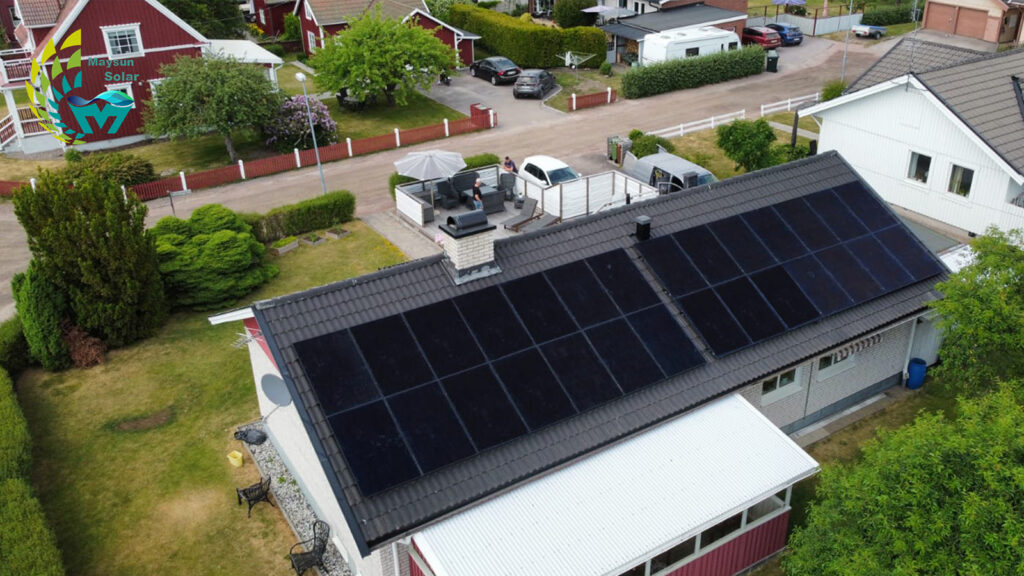
What Are the Application Scenarios for Solar Thermal?
1. Water heating
This is one of the original uses of solar thermal energy, i.e., the direct conversion of solar radiation into heat. Low or high-temperature applications are two different ways of utilizing solar thermal energy.
2. Concentrating solar power plants
Solar thermal energy with temperatures up to 500 °C is generated using solar radiation. Electricity is generated by utilizing the heat stored in the working fluid of the receiver. Compared to photovoltaic power generation, there are no very complex technical issues. However, the service life of solar thermal is not long, and it is impossible to provide a long-term power supply.
3. Solar chimneys
In highly isolated plains areas of relatively low commercial value, such as the semi-arid regions of Brazil, various solar production technologies have been considered in addition to concentrating solar power plants. Compared to photovoltaics, the lower cost makes it suitable for solar thermal power generation
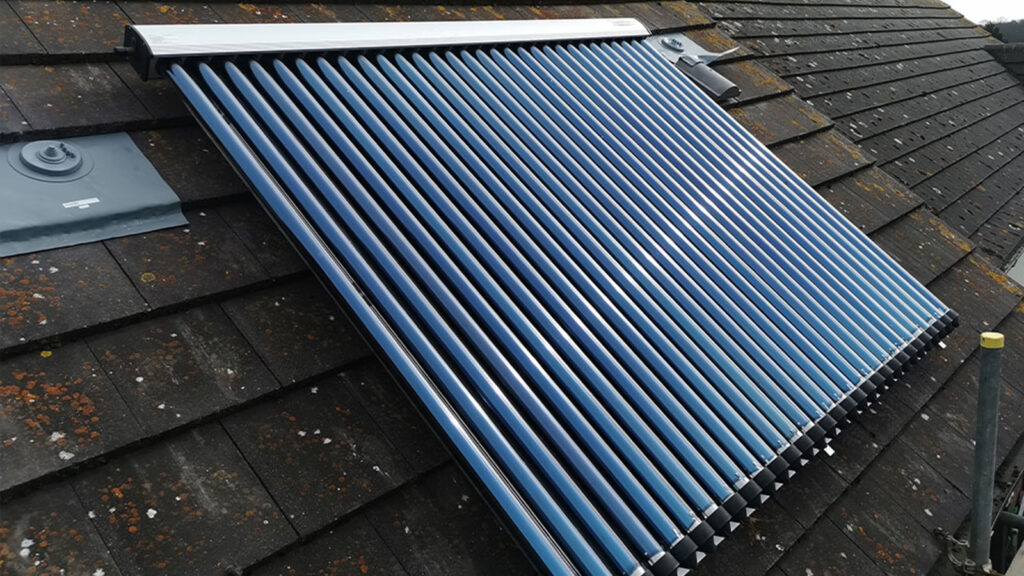
Compared with solar thermal, what are the advantages of solar PV (photovoltaic) power generation?
Compared with solar thermal utilization technology, solar PV (photovoltaic) power generation has the following main advantages, including:
Solar PV is more flexible than solar thermal because the electricity generated by a solar PV panel can be used for a variety of purposes.
Panels typically last longer than solar thermal, capable of generating electricity for around 30 years, although in reality many solar PV (photovoltaic) systems last much longer, albeit with declining efficiency levels.
Solar PV (photovoltaic) can generate more electricity than is actually needed, especially in the summer, so the excess electricity can be exported to the grid in exchange for payment.
Compared with solar thermal, what are the disadvantages of solar PV (photovoltaic) power generation?
One disadvantage of solar PV (photovoltaic) compared to solar thermal is the generally higher upfront cost of installing the system, although this can be offset by savings in energy bills.
They also take up more space than a solar thermal panel, which can be problematic for some roofs or houses.
Most importanly, finding reliable solar PV panel suppliers and installers can sometimes be tricky. Maysun Solar is a reliable solar panel manufacturer, and our PV experts will recommend the right solar panel for your needs, reducing your decision-making costs and time! To find the best prices and seek advice from reliable original manufacturer.
Additionally, if the electricity generated by a solar PV panel is not used immediately, it will need to be stored in an accompanying energy storage system.
Solar Thermal vs Solar PV (photovoltaic)—which Should You Choose?
It depends on the type you need.
If you need electricity, panels will be the way to go. If thermal energy is required, solar thermal energy should be used. Suppose you need both heat and electricity. In this case, panels would be a better choice than solar thermal because electricity can be easily converted into any other form of energy with current technology. Solar systems are also becoming increasingly efficient. Since 2009, the cost of panel modules has dropped by 80%. In contrast, technological progress in the photothermal industry is not so significant.
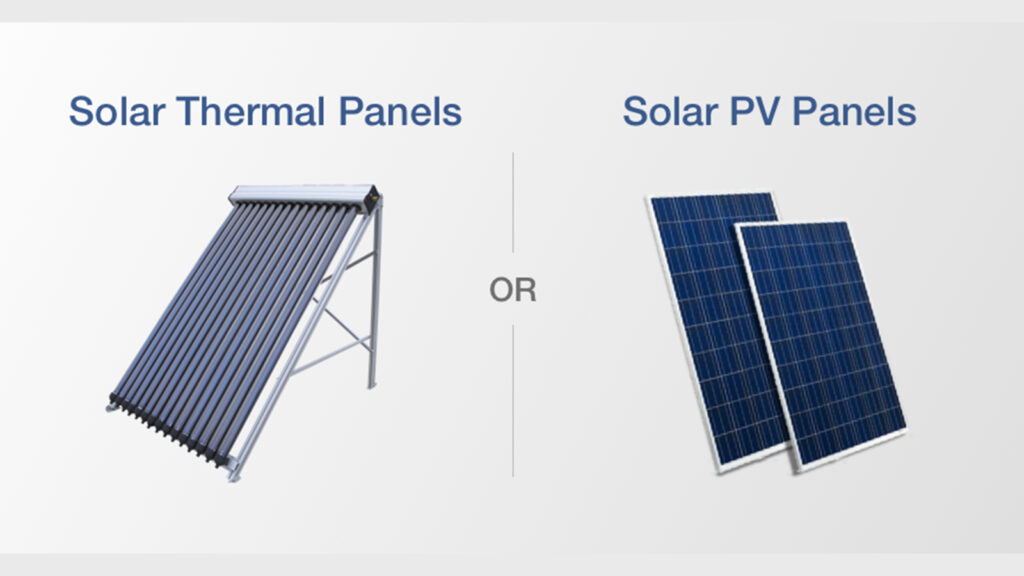
Maysun Solar has focused on creating premium panel modules since 2008. We use half-cut, MBB, IBC, and Shingled technologies in a variety of solar panles, including those that are all-black, black frame, silver, and glass-to-glass. These solar panles provide exceptional performance and chic looks that fit nicely with any architecture. Maysun Solar has effectively created warehouses and offices in numerous nations, and it has developed enduring connections with top installers! Contact us if you have any questions about PV or would want the most recent module quotes. We will be delighted to assist you.
Source:
https://www.greenmatch.co.uk/blog/2016/04/differences-between-solar-photovoltaics-and-solar-thermal

How to Effectively Clean and Intelligently Maintain Photovoltaic Systems for Optimal Performance?
Explore how scientific cleaning and intelligent maintenance can ensure the efficient operation of commercial and industrial photovoltaic systems. Practical advice covers module cleaning frequency, monitoring system configuration, and long-term strategies for energy savings and performance enhancement.

2025 European Photovoltaic Policy Map: Deployment Paths and Regional Strategies for Commercial and Industrial Photovoltaics
A comprehensive analysis of the 2025 European commercial and industrial photovoltaic policy map, focusing on deployment strategies, incentive comparisons, and zero-investment models to support businesses in achieving an efficient and green transition.

Empowering Factories with Solar Energy A Strategic Tool for Controlling Production Electricity Costs
Commercial and industrial solar is becoming a key solution for factories to reduce electricity costs and hedge against price fluctuations. This article systematically analyzes its deployment models, cost advantages, and sustainable value pathways.

How Businesses Can Offset Carbon Taxes with Solar Power
This article analyzes the latest carbon tax policies and photovoltaic deduction strategies, helping European businesses legally reduce taxes, increase profits through solar investment, and achieve a win-win situation for both economy and environment.

Forecast and Response: Seizing the Next Decade’s Growth Dividend in Europe’s Commercial and Industrial Photovoltaics Market
Maysun Solar analyzes the growth trends of commercial and industrial photovoltaics in Europe over the next ten years, from policies and ESG to technological innovation, helping companies seize the initiative in the energy transition.

How to Calculate Solar System ROI and Optimize Long-Term Returns?
Solar power is becoming a key solution for businesses to reduce costs and improve efficiency. Accurately calculating ROI and optimizing long-term returns are essential to maximizing investment value.

